A patient after the luxation of the left shoulder joint in December 1999, made reposition, and the patientīs limb is in a sling for 3 years. He comes to the rehabilitative department with a recommendation from surgical outpatient department to exercise with the shoulder???!!!
ventral view |
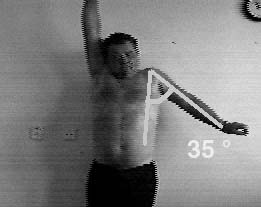
dorsal view |
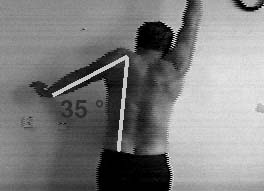
videoclip of the elevation of the shoulder, dorsal view
notice the synkinesis of the scapula on the affected side, with this movement the patient compensates the deficit of the elevation caused by the rupture of the rotator cuff
outer rotation |
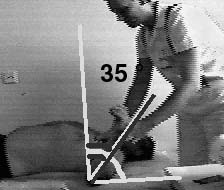
videoclip of the outer rotation - pathological side (outer rotation
is only till 35 degrees)
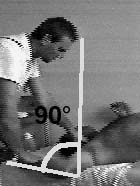
videoclip of the outer rotation - healthy side
inner rotation |
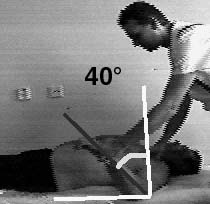
videoclip of the inner rotation - pathological side
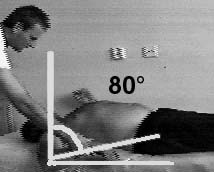
videoclip of the inner rotation - healthy side, notice
the restriction of the inner rotation of the glenohumeral articulation of the
left arm
abduction |
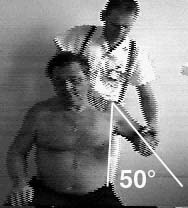
videoclip of the abduction -
pathological side, the
abduction is possible only till 50 degrees
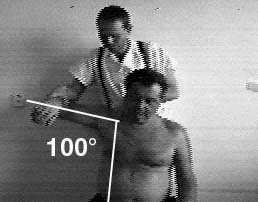
videoclip of the abduction - normal side, the abduction is possible till 100 degrees
flexion |
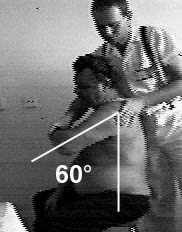
videoclip of the flexion -
pathological side, the
flexion is possible only till 60 degrees
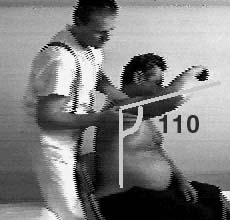
videoclip of the flexion -
healthy side, the elevation is
possible till 110 degrees
| examination of the isometric abduction - m. supraspinatus |
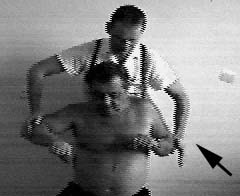
videoclip
of the isometric contraction of m. supraspinatus, an
arrow shows a place with the weakened abduction
| videosequence of drop out |
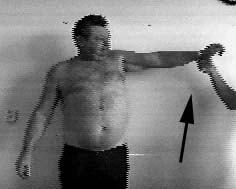
videosequence of drop out, an arrow shows an arm with a symptom of drop out. Notice two phases of a fall. In the first phase there is a spontaneous fall which is finished when a function of m. supraspinatus is taken over by other muscles of the rotator cuff and in the area of the glenohumeral articulation. But a pain prevents these muscles to involve in, and therefore another fall of the limb occurs.